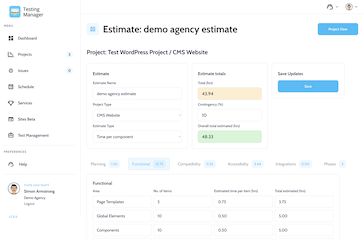
A big topic for many years now, user experience or UX, is a commonly used expression, there are many websites and people devoted to it and it is relatively easy to find a UX specialist, designer or consultant.
So, in short, why do many sites and apps continue to suffer from a poor user experience?
You only have to look at Econsultancy's reviews to see how some major retailer websites have user experience problems.
Or how major restaurant chains have a series of user experience issues to overcome:
Or this more recent article regarding online mortgage applications demonstrating poor UX.
Here are the top 5 reasons why user experience may take a back seat:
Another aspect about user experience is that you can create UX issues by setting an expectation for the user that isn't met.
For example, whilst doing a bit of research for this post, I found some evidence to share with you. Go to Econsultancy , a well renowned International organisation for promoting digital best practice and excellence already mentioned in this post. Scroll right to the foot of the page and in the 'Popular Event Topics' section of the footer click on User Experience and Usability, which takes you to this URL.
What happens? Well, there are no events for the popular events topic that is User Experience and Usability. A bit of intro text on how essential user experience is and then 'No events could be found'.
OK, not everyone scrolls to the bottom of a very long page to click on an item in the footer, but I was researching and I remembered that Econsultancy have (or had) some helpful and relevant subjects in the footer.
But hopefully you get my point, my experience of using Econsultancy's website was poor on this particular occasion, I expected to see events relating to User Experience because that was what I was led to believe I would get when clicking on the link.
Sometimes, a poor user experience can be avoided if you don't stitch yourself up by setting an expectation, which is then not met once the user clicks or proceeds to the next page.
Here's a good test, try to order something quickly from an ecommerce site that you are not familiar with. Find a product that you would be genuinely interested in purchasing, find out some details about it, put it in the basket and go through to the checkout. Is it easy? Frustration free? Probably not.
Don't get me wrong, there are some great sites out there with real attention to detail that make the overall experience of using them a real pleasure.
Here are a couple of examples of good user experience.
Gov.uk - many people's top choice for putting the user first, Gov.uk has come on leaps and bounds over the last few years.
ao.com - the ecommerce site that is getting a lot right these days, from staying afloat during black Friday last year to getting tons of appreciative press from industry experts.
The good thing about a bad user experience, is it can be improved.
There are a number of ways that you can set about putting things right, such as these 2 methods.
With either of the above options you can start improving your site straightaway, by finding what user experience problems you may be suffering from and then doing something about them.


